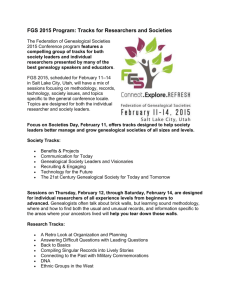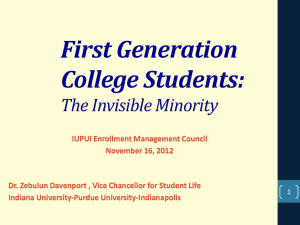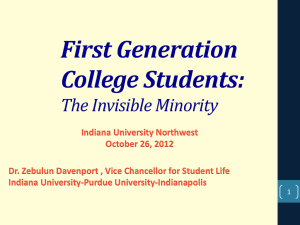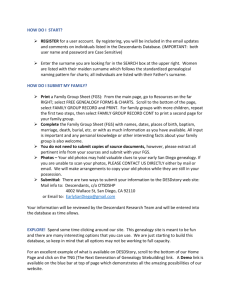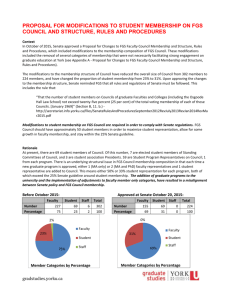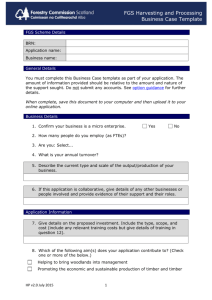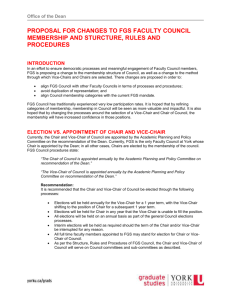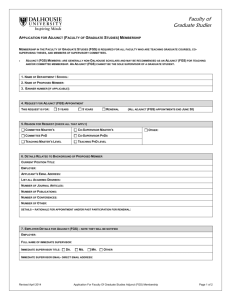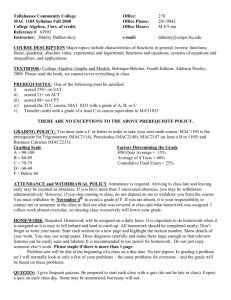force generation quick summary chart
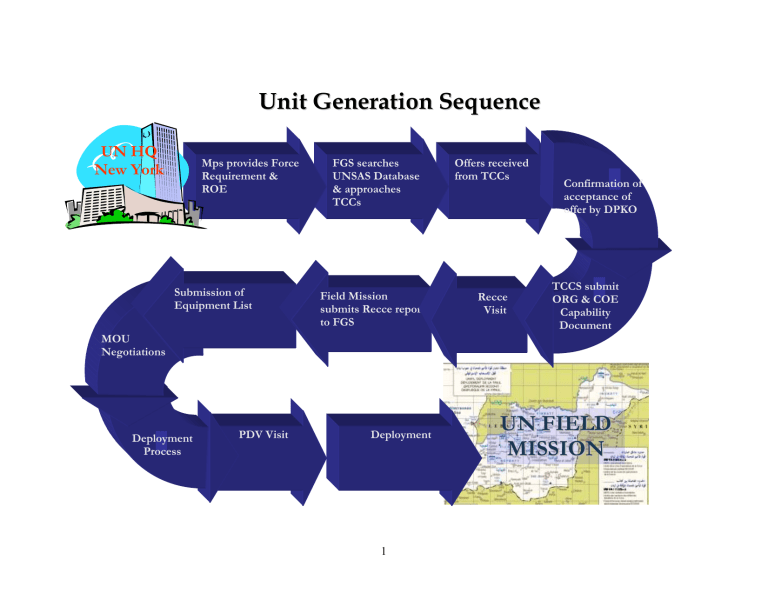
U n i i t t G e n e r r a t t i i o n S e q u e n c e
UN HQ
New York
Mps provides Force
Requirement &
ROE
FGS searches
UNSAS Database
& approaches
TCCs
Offers received from TCCs
Confirmation of acceptance of offer by DPKO
MOU
Negotiations
Submission of
Equipment List
Field Mission submits Recce report to FGS
Recce
Visit
TCCS submit
ORG & COE
Capability
Document
Deployment
Process
PDV Visit Deployment
U N F I E L D
M I S S I O N
1
I I n d i i v i i d u a l l G e n e r r a t t i i o n S e q u e n c e
FGS Searches UNSAS
Database and consider
TCCs in Mission
FGS requests for
Nomination from PMs
(D-3 Months)
PMs submit
Nominations:
PHF & MS 2
(D-2 Months)
Travel Desk
Issues Travel
Authorizations
FGS Generates IMIS and
Approval Faxes to PMs FGS Selects
Individuals & keys in information
(D-1 month)
Respective UNDP
Offices make travel arrangements
Individual reports to
UN field missions
U N
M I S
F
S
I
I
E
O
L D
N
2
1
2
3
4
5
UN Experts on Mission
(UNMEMS); UN Military
Observers (UNMOs) and
Military Liaison Officers
(MLOs)
FGS/SAT identifies MS pledging UNMOs, MLOs in the UNSAS database and/or FGS/FGT planners identify MS already contributing in the mission for which personnel is required.
FGS requests Permanent
Mission (PM) nomination of personnel including curriculum vitae, travel itinerary and MS 2 Form
Entry Medical Examination.
PM submits nominations
FGS selects and Travel Unit arranges travel with UNDP
Offices in capitals and PM in NY. For “new peacekeeping missions”
FGS selects a variable number of UNMOs/MLOs to attend pre-deployment courses. Subsequently, participants travel and report to the Mission
UNMEM (UNMOs /
Staff Officers (SOs)
FGS/SAT identifies MS pledging
Staff Officers in the UNSAS database and/or FGS/FGT planners identify MS already contributing in the mission for which personnel is required.
FGS requests PMs nomination of personnel including curriculum vitae, travel itinerary and MS 2
Entry Medical Examination Form.
PM submit nominations
FGS selects and Travel Unit arranges travel with UNDP
Offices in capitals and PM in NY.
For “new peacekeeping missions”
FGS selects a variable number of key staff officers to attend predeployment courses and make up a coherent team. Subsequently, participants travel and report to the Mission.
Staff Officers travel, report to
Troops – Contingent Member required for the mission.
Infantry Units and
Enabling Units (2)
FGS/SAT in consultation with LSD and the field mission (if established) review MPS provided Force Requirements Statements and produce a consolidated Generic COE Table detailing the required major equipment and self-sustainment capabilities of units
FGS/SAT identifies MS pledging specific units in the UNSAS database and/or FGS/FGT planners identify MS already contributing in the mission for which specific units are required.
UN requests MS to contribute units to the mission normally by fax
Member States advise decision to participate
Clearance of by UN
3
6
7
8
9
10
11
MLOs) travel, report to
Mission and sign a contract
12
REMARKS UNMOs and MLOs receive
Mission Subsistence
Allowance (MSA) for food, accommodation and incidentals (laundry, limited transportation).
MSA amount varies from
Mission to Mission and
Military Headquarters in the
Mission
Qualifications: Staff Officers are reimbursed as contingent members. Staff Officers must be able to drive vehicles, must speak and write the Mission’s official language, know how to operate computers, phones and radios.
Must be physically and mentally
FGS provides PMs with a copy of the Force Requirements of specific units and the Mission’s COE Table. The COE table includes an indicative list and quantities of Major Equipment items.
TCC submits Table of Organization and Equipment (TOE) to Force
Generation Service (FGS) and Cargo Load Lists to Movement
Control MovCon).
Potential TCC sends reconnaissance team to the Mission area.
Organization of unit(s) offered is fine tuned after the visit.
FGS, FMSS, LSD and other relevant UN/DPKO offices (such as DSS,
UNMAS), in consultation with the Field Mission (if established), and MS negotiate an MOU.
DPKO normally conducts a pre-deployment visit to TCC.
(Eventual). DPKO conducts an “in country” pre-deployment training of new TCC’s units.
MovCon in consultation with FGS, LSD, the Field Mission and PMs of TCC plan and coordinate transportation of personnel (normally by air) and COE cargo (normally by sea). Normally contingents deploy in two or more echelons as necessary, e.g. Advance Party 10 to 15 % of total strength and Main Body. Normally the Advanced
Party is transported by air for both personnel and limited cargo. For transportation by sea, 20 foot sea containers are the preferred and often the mandatory type. The UN discourages the use of 40 foot containers as most missions do not have heavy lifting equipment.
TCC’s units deploy to Mission.
Command and Control. Units are under Operational Control
(OPCON) of the Force Commander (FC) and under Tactical Control
(TACON) of the Sector Cdr. Participation of female troops in units are encouraged. Units normally rotate every 6 months.
MEMORANDUM OF UNDERSTANDING.
The MOU is a document that functions as the contractual arrangement between the UN and the TCC, detailing the number of
4
may be reduced if the UN provides accommodation, food etc. They must be able to drive 4x4 vehicles and possess their National
Driver’s License. They must
Speak and write the
Mission’s official language and know how to operate computers, phones and radios. They must be physically and mentally fit.
They should be between 25 and 50 years old.
Participation of female
UNMOs/MLOs is encouraged.
Most UNMOs are Majors.
There are also Lieutenant
Colonels and Captains.
Tour of duty of Military
Observers and Military
Liaison Officers is one year. fit.
Participation of female staff officers is encouraged. Tour of duty of staff officers is one year. troops, the quantity and type of major equipment, and the categories of self-sustainment that will be provided by either the
TCC or arranged by the UN in a particular mission, originating locations and ports of entry and exit for the purpose of transportation arrangements for the movement of troops and equipment and entry into force date.
The MOU includes the Mission Factors applicable to the field mission which are applied to the reimbursement rates for major equipment and self sustainment. The Mission Factors are;
Environmental condition factor, Intensity of Operations factor,
Hostile Action/Force Abandonment Factor and Incremental
Transportation factor.
Annex A: Personnel
TCC Government receives Troops costs: $ 1,028 per month per contingent member.
Personal clothing, gear and equipment allowances: $ 68 per month per contingent member.
Personal weaponry and training ammunition: $ 5 per month per contingent member.
An allowance for specialists: $ 303 per month for up to 25 % of troop strength of ‘Logistics’ Units (such as Aviation, Engineering,
Medical, Communications, Transport) and 10 % of the troop strength of ‘Infantry’ Units including Force Headquarters Guard and Admin Units, , Sector Headquarters, Special Forces elements,
MP units.
The contingent personnel will receive directly from the peacekeeping mission a daily allowance of $ 1.28 plus a recreational leave allowance of $ 10.5 per day up to 7 days of leave taken during each six month period.
Annex B: Major Equipment
COE Manual 2002 Chapter 8 includes a table of Major Equipment sorted by functional categories.
5
6
The usual arrangement is a “Wet Lease” which means that TCCs provide the items of major equipment and undertake the maintenance.
Items of major equipment not included in the COE Manual table are treated as “Special Cases”. For Special Cases, TCCs are requested to provide FMSS (MCMS) with details of the price paid, useful life and monthly maintenance costs of items of major equipment to allow reimbursement rates to be determined.
Annex C: Self-sustainment. Normally, units must be fully selfsustaining in the following categories:
Catering. Kitchen, deep freeze and cold and dry food storage, hot dishwashing capabilities, cooks, among others.
Communication. Integral communication within the unit with
VHF/UHF-FM communications and telephone lines.
Office. Office furniture and supplies, electronic data processing and reproduction capability including necessary software, among others.
Electrical. Must be self-sustainable electrically. For broad planning purposes, units should have sufficient generating capacity to provide at least 1 KVA per contingent member but actual capacity requirements will vary considerably between unit types and locations.
Minor Engineering. Capabilities to handle minor repairs in electrical, plumbing and carpentry, to undertake non-field defensive minor construction, among others.
EOD. For the unit’s accommodation area and/or for force EOD.
Laundry & Cleaning. For all military and personal clothing, including dry-cleaning of operationally-required specialist clothing, among others.
Tentage. It includes flooring and the ability to heat and cool as
7 appropriate. If troops are still accommodated in tents after six months, the TCC is entitled to reimbursement of both the ‘Tentage’ and ‘accommodation’ categories until hard walled accommodation is provided by the UN.
Medical. Units normally deploy with their own Basic Level (soldier level or Buddy-Aid) and a specified number of Level I medical facilities. Normally a Level 2 medical facility will be located in each major sector and at the Force HQ for use by all UN personnel. A
Level 3 medical facility may be provided by a TCC for the whole mission or the UN may make commercial arrangements for this level of medical treatment. UN normally provides blood and blood products.
Observation. Capability to observe 24/7 (hand-held binoculars, night vision goggles, other night vision devices) and determine the exact location of a person, item and own locations within the area of operations through the combined use of GPS and laser range finders.
Identification. UN will normally provide if operationally required.
MP Units may typically be asked to provide for their self sustainment
NBC Protection. Normally not needed unless otherwise indicated.
Field Defense Stores. UN will normally provide.
Miscellaneous General Stores. Bedding, furniture, welfare equipment & amenities, among others.
Unique Services. Unique self sustainment services not covered by any other category as detailed in the COE Manual.
When field missions are not yet fully established, support contracts for fuel and rations or the provision of water may not yet be in place and TCC may be required to deploy ‘self sufficient’ in these commodities. Typical self sufficiency requirements, which will be
advised to TCC before deployment and which are reimbursable to
TCC via a claim are:
Water. Drinking water for the first 7-14 days after deployment. The
UN is responsible for the provision of bulk and potable water and may wet lease water treatment plants from TCC to meet this responsibility.
Ration. Rations for the first 30-60 days;
Fuel. Fuel with 1/3 tank-full for respective vehicles. Diesel-fueled vehicles are recommended. The UN normally provides fuel in the mission area.
Note:
(1) Senior Appointments. FGS is also responsible for the generation of senior appointments, e.g. Force Commander, Chief Military Observer, Chief
Military Liaison Officer, etc. FGS initiates the process inviting MS to nominate senior officers for specific positions in the field. The nominated senior officers should meet the job description, skills and competencies required. Interviews conducted by DPKO Senior Management take place through
Video Telephone Conference (VTC) and In-Mission briefings take place in UN HQ.
(2) Enabling Units concept: Those resources, military or civilian units and sub-units, required to enable the deployment to a peace operation and perform those functions commonly required in peacekeeping missions, regardless of the size or mandate of the mission. Prerequisites: Availability within 30/90 days. Available for traditional/complex peacekeeping mission. Adequately trained and equipped. Examples: Air Operations (Ops Unit,
Crash Rescue & Fire Fighting, Cargo Handling, MOVCON Teams, MEDEVAC, SAR), Seaport Operations (Cargo handling, MOVCON, Warehousing),
Fuel Handling Units
HQ Admin Support & Security, De-mining (Operational), Logistics Units, Transportation, Procurement Services Engineer Units (Horizontal &
Vertical), Signal units, Medical unit, Aviation units, Amphibious units, etc.
References:
A.
Stand-By Arrangements in the Service of Peace Tables of Organization and Equipment Edition 2009.
B.
Manual on Policies and Procedures Concerning the Reimbursement and Control of Contingent-Owned Equipment of Troop/Police
Contributors Participating in Peacekeeping Missions (COE Manual).
C.
Generic Guidelines for Troop Contributing Countries Deploying Military Units to the United Nations Peacekeeping Missions.
D.
Selection Deployment, Rotation, Extension, Transfer and Repatriation of United Nations Military Experts on Mission in United Nations
Peacekeeping Operations.
8
